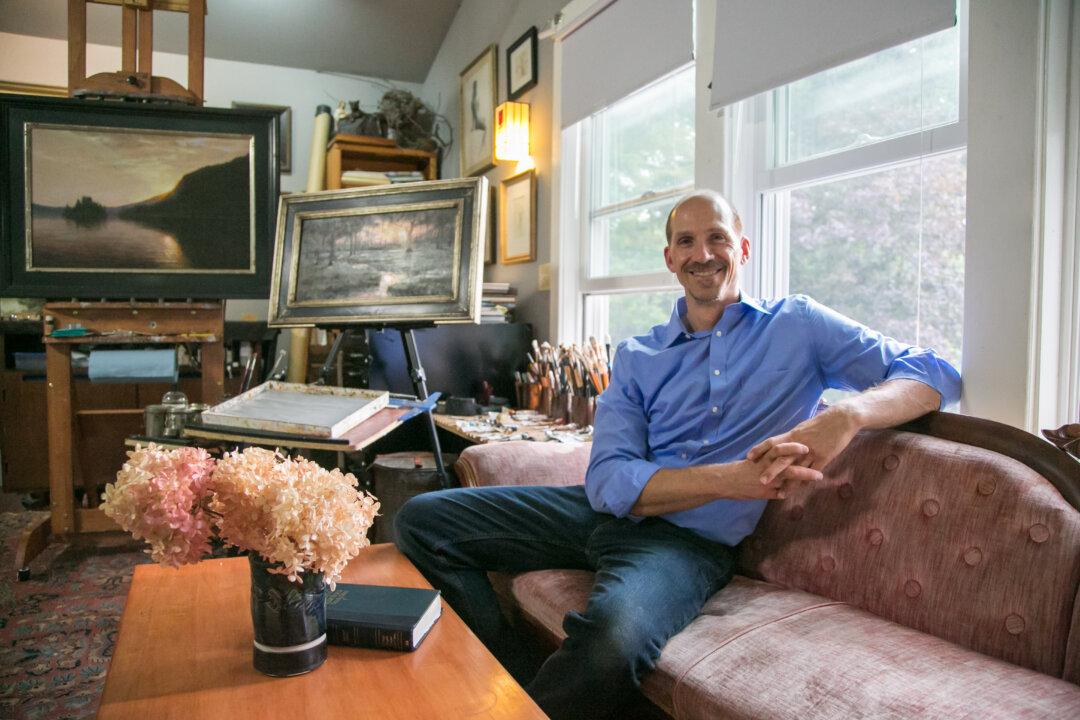EAST AURORA, N.Y.—The beauty and magnificence of nature can reveal truths for us. When Thomas Kegler paints outdoors, he is feeling air currents, watching the leaves move, and hearing their rustling. He’s observing birds glide in the distance or listening to their singing in nearby trees. He’s noticing squirrels scurrying, and hearing a concert of acorns thumping on the ground. Occasionally, he’ll see a deer family or even smell them before he sees them. He smells other things—the earth, the forest, wild flowers, and the mist.
In nature, the “senses become more alive, and that makes me a better painter,” he said. “Paint what you know, and you can share that better—more passionately, hopefully,” Kegler said in his loft studio at his East Aurora home on a mid-August day.
With every composition he makes, every mark he draws, every color he chooses to paint, he feels whispers throughout the entire process. “I’d like to say that I’m having epiphanies, but they are not,” he said. “They are really subtle whispers. I’m feeling them, not hearing them. They are so soft and quiet that typically I don’t become aware of them until the painting is done,” he said.






